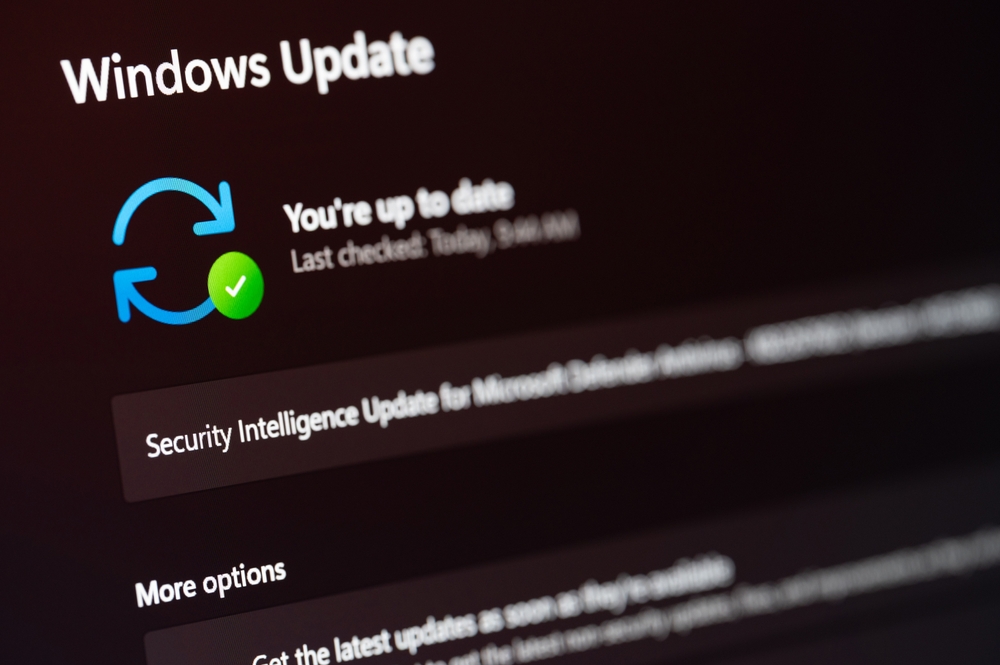Microsoft’s latest Windows 11 update is causing game performance to drop by as much as 50 percent
Others are reading now
Microsoft’s newest Windows 11 update is causing huge performance drops in some PC games, with frame rates falling by as much as 50 percent. The issue hits just months after Windows 10 support ended, leaving many users who upgraded with fewer options when something goes wrong.
Update linked to sharp frame rate drops
The problems began after Microsoft pushed out its October 2025 cumulative update for Windows 11, known as KB5066835. The patch was rolled out to systems running the 24H2 and 25H2 versions of the operating system and was supposed to be a routine bundle of fixes.
Instead, players started noticing that certain games suddenly felt far less smooth. Titles that previously ran without issue were now struggling, with frame rates dropping dramatically. Reports piled up on forums and social media until NVIDIA stepped in with an emergency GeForce 581.94 “hotfix” driver, confirming the slowdown was real and widespread enough to warrant an immediate response.
Tests confirm impact across hardware
Independent benchmarks have since measured how severe the slowdown can be. Digital Foundry ran controlled tests on a system using an AMD Ryzen 7 9800X3D processor paired with an NVIDIA RTX 5090. Before the update, games like Assassin’s Creed: Shadow and Counter-Strike 2 ran as expected. After installing KB5066835, performance in those same titles fell by roughly one third to one half, depending on the scene.
This was not a random stutter or a one-off glitch. The drop was repeatable across multiple runs and directly tied to the system having the update installed.
Also read
Crucially, the problem is not limited to NVIDIA graphics cards. Testing by Windows Latest on machines equipped with AMD Radeon and Intel Arc GPUs produced similar slowdowns. Any PC running Windows 11 build 26100.6899 or newer (for 24H2) or 26200.6899 or newer (for 25H2) appears to be at risk, regardless of which graphics vendor it uses. That strongly suggests the root cause lies inside Windows itself, not in any one set of drivers.
Windows 10 support is gone, and so is the fallback option
This would be frustrating at any time, but the timing makes it worse. Earlier this year, Microsoft ended support for Windows 10, cutting off regular security updates and feature patches for the older operating system. Many users who preferred to stay on Windows 10 for stability have since moved to Windows 11 to avoid running an unpatched system.
With this update now hurting performance, those same users have little room to maneuver. Staying on Windows 10 long term is no longer realistic from a security standpoint, and rolling back individual Windows 11 updates can be confusing or, in some cases, no longer possible once the rollback window closes. The result is a user base that is effectively locked into Windows 11 while dealing with a patch that can make modern games run dramatically worse.
No clear pattern in which games are affected
One of the more confusing aspects of the bug is its inconsistency. Not every game is impacted, and there is no official list of problem titles. Graphics-card makers have yet to identify a single shared game engine or rendering technique that explains why some titles are hit hard and others seem untouched.
That means many players will only realize there is a problem when a familiar game suddenly performs worse than they remember, without any obvious explanation.
Also read
Microsoft’s update process under scrutiny
A Windows update that can cut game performance in half raises obvious questions about how these patches are tested before release. Cumulative updates touch low-level parts of the system, including the graphics stack, which is extremely sensitive to small changes. When a regression of this scale slips through, it reinforces long-running concerns about the reliability of Windows’ monthly patch cycle.
It also puts additional pressure on hardware partners. The fact that NVIDIA felt compelled to ship a stopgap driver, and that AMD and Intel are investigating the issue on their side, shows how much effort is being spent reacting to a problem introduced higher up the stack.
Limited workarounds for now
At the moment, NVIDIA users can install the 581.94 hotfix driver to reduce the impact of the slowdown in some titles, though it does not fully solve the underlying issue. AMD and Intel users do not yet have a similar workaround and must wait for Microsoft to address the problem in a future Windows update.
Until Microsoft releases a fix, installing KB5066835 may significantly reduce performance in certain games. Users who have not yet applied the update may choose to hold off if gaming performance is a priority, while those already affected will likely need an operating system–level patch from Microsoft to fully restore previous performance levels.
Sources: Windows Direct, Nvidia, Digital Foundry


